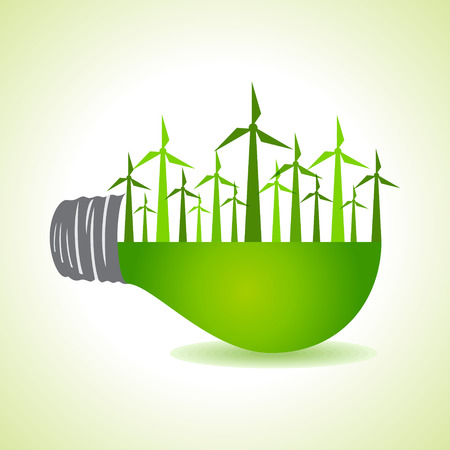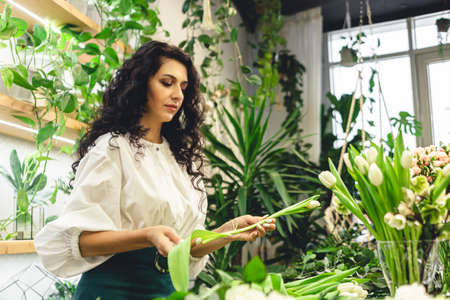1. Understanding the Basics of Grow Lights
If youre growing plants indoors, choosing the right grow light is key—not just for healthy plant growth, but also for keeping your home safe from overheating and electrical issues. In the U.S., the most common types of indoor grow lights are LED, fluorescent, and HID (High-Intensity Discharge). Each type works differently, generates different amounts of heat, and has specific electrical needs.
Types of Indoor Grow Lights
| Type | How It Works | Heat Output | Typical Electrical Requirements |
|---|---|---|---|
| LED (Light Emitting Diode) | Uses semiconductor chips to emit light when electric current passes through | Low | Usually 100–600 watts; energy-efficient |
| Fluorescent (CFL or T5) | Electricity excites mercury vapor inside the tube, producing UV light that turns into visible light via a phosphor coating | Moderate | Around 20–300 watts; lower power consumption than HID |
| HID (High-Intensity Discharge – MH and HPS) | An electric arc passes between electrodes in a gas-filled tube, creating intense light | High | Around 250–1000+ watts; requires ballast for operation |
The Link Between Heat and Electrical Safety
The more heat a grow light produces, the greater the risk of overheating your indoor space or overloading your electrical circuit. High-output lights like HID systems need proper ventilation and should be plugged into circuits that can handle their power draw. On the other hand, LEDs stay cooler and use less electricity, making them a safer choice for smaller grow spaces or beginners.
A Quick Tip:
No matter which type you choose, always check the manufacturers specifications for power ratings and never plug multiple high-wattage devices into a single outlet without understanding your circuits capacity. This helps prevent fire hazards and keeps your grow setup running smoothly.
Your Next Step:
Select a grow light that fits both your plants needs and your homes electrical limits. Up next, we’ll dive into how to manage heat buildup effectively in your indoor garden.
2. Proper Placement and Ventilation
Setting up your grow lights correctly is essential for both plant health and household safety. Improper placement can lead to overheating, fire hazards, or even damage to your plants due to excessive heat or light exposure. Heres how to make sure youre placing your grow lights in the safest and most effective way possible.
Keep the Right Distance
Different types of grow lights emit varying levels of heat and intensity. Placing them too close can cause leaf burn, while placing them too far may result in weak, leggy growth. Use the table below as a general guide for proper distance:
| Type of Grow Light | Recommended Distance from Plants |
|---|---|
| LED (Light Emitting Diode) | 12-24 inches |
| Fluorescent (T5, CFL) | 6-12 inches |
| HID (High Intensity Discharge) | 24-36 inches |
Tip:
Always check the manufacturer’s guidelines for specific recommendations. Adjust the height as your plants grow to maintain the proper distance.
Ensure Good Airflow
Adequate ventilation helps regulate temperature around your grow lights and prevents hotspots that could lead to overheating or fire risks. Here are some simple ways to improve airflow:
- Use oscillating fans: These help circulate air evenly across the growing area.
- Avoid enclosed spaces: If youre growing in a tent or closet, make sure theres an exhaust fan or vent system installed.
- Leave space around fixtures: Don’t place lights directly against walls or ceilings; give them breathing room to dissipate heat.
Quick Check:
If it feels hot near your plants or lighting system, its time to reassess your setup. A simple thermometer can help you monitor temperatures and keep things within a safe range (generally 65–80°F for most indoor plants).
Avoid Overcrowding
Packing too many plants under one light source can limit airflow and increase humidity, which not only affects plant health but also raises safety concerns. Make sure each plant has enough space to breathe and get adequate light without blocking others.
Remember:
The goal is to create a balanced environment where plants can thrive without risking electrical issues or excess heat buildup. With proper placement and good ventilation, you’ll set yourself up for a safer and more successful indoor garden.

3. Choosing Safe and Certified Equipment
When setting up grow lights indoors, one of the most important steps you can take to prevent overheating and electrical hazards is choosing equipment that meets U.S. safety standards. Not all lighting products are created equal, and using uncertified or poorly made gear can put your home at risk.
Why Certification Matters
Certified grow lights have been tested by independent laboratories to ensure they meet strict safety requirements. In the United States, two of the most recognized certifications are:
- UL (Underwriters Laboratories)
- ETL (Electrical Testing Laboratories)
If a product is UL-listed or ETL-certified, it means it has passed tests for fire safety, electrical shock protection, and other potential hazards. These certifications help give you peace of mind that your grow light system won’t become a fire risk.
How to Identify Safe Products
Before buying any grow light or accessory, check the labeling on the packaging or the product itself. Certified products will usually include a sticker or label with the certification mark. Heres how to spot them:
| Certification | What to Look For |
|---|---|
| UL Listed | A “UL” inside a circle or letters “UL” next to “Listed” or “Classified” |
| ETL Certified | The “ETL” mark with small print showing compliance with North American safety standards |
Avoiding Unsafe Products
If a product doesn’t have any certification mark, it’s best to avoid using it indoors—especially for continuous use like plant lighting. Cheap, uncertified lights may overheat easily, have poor wiring, or lack proper insulation.
Quick Tips for Smart Purchasing:
- Buy from reputable retailers or garden supply stores.
- Avoid generic or unbranded lighting systems sold online without clear specifications.
- If in doubt, ask the seller if the product is UL-listed or ETL-certified before purchasing.
This simple step can go a long way in keeping your indoor garden safe and functional.
4. Electrical Safety and Load Management
When setting up grow lights indoors, its crucial to manage your electrical setup safely. Overloading outlets or using the wrong equipment can lead to overheating, short circuits, or even electrical fires. Heres how to keep your grow space safe and efficient.
Use Surge Protectors
Always plug your grow lights into a high-quality surge protector. These devices help protect your equipment from power spikes and reduce the risk of electrical damage. Choose surge protectors with a UL (Underwriters Laboratories) certification to ensure they meet safety standards in the U.S.
Avoid Daisy-Chaining Extension Cords
Daisy-chaining—plugging multiple extension cords or power strips together—is a common but dangerous practice. It increases the risk of overloading circuits and can cause cords to overheat. Instead, use one properly rated surge protector per outlet and avoid connecting them in series.
Know Your Circuit’s Load Capacity
Each circuit in your home has a maximum load it can handle, usually measured in amps. Most standard household circuits are either 15 or 20 amps. Exceeding this limit can trip breakers or cause wiring to overheat.
Typical Load Capacities for Household Circuits
| Circuit Type | Amperage | Maximum Wattage (120V) | Suggested Max Load (80%) |
|---|---|---|---|
| Standard Outlet Circuit | 15 Amps | 1,800 Watts | 1,440 Watts |
| Heavy-Duty Circuit | 20 Amps | 2,400 Watts | 1,920 Watts |
How to Calculate Your Load
To stay within safe limits, add up the wattage of all devices plugged into the same circuit. This includes grow lights, fans, timers, and any other electrical equipment nearby. Use this formula:
Total Wattage = Voltage (120V) × Amperage Used by Devices
If youre not sure which outlets are on the same circuit, consider labeling them after testing with a circuit breaker finder or consulting an electrician.
Final Tips for Safe Power Usage
- Don’t run cords under rugs or furniture—they can trap heat and wear down insulation.
- Inspect cords regularly for signs of damage or fraying.
- If you’re using high-wattage grow lights, consider installing a dedicated circuit.
- Avoid plugging too many high-draw devices into one outlet.
Managing your power usage carefully keeps your indoor garden safe and helps prevent costly damage or dangerous situations.
5. Routine Maintenance and Inspection
Keeping your grow lights in good working condition isnt just about helping your plants thrive — its also a key part of staying safe indoors. Regular maintenance and inspection can prevent overheating, reduce the risk of electrical hazards, and keep everything running efficiently.
Inspect Cords, Plugs, and Fixtures
Over time, wear and tear can affect the safety of your grow light setup. Its important to check all electrical components regularly:
| Component | What to Look For |
|---|---|
| Power Cords | Check for cracks, fraying, or exposed wires |
| Plugs | Look for bent prongs or signs of burning |
| Sockets/Fixtures | Ensure theyre not loose and show no discoloration from heat |
If you notice any damage, replace the parts right away or consult a qualified electrician. Never use damaged cords or plugs — even small issues can lead to serious safety problems.
Keep Lights Clean and Dust-Free
Dirt and dust can build up on your grow lights over time, blocking light output and creating fire hazards. Make it a habit to clean your lighting gear regularly:
- Wipe down bulbs and reflectors with a dry microfiber cloth
- Vacuum around ballasts and ventilation areas to remove debris
- Avoid using water or harsh chemicals near electrical components
A clean setup not only improves performance but also extends the life of your equipment.
Maintenance Schedule Example
| Task | Frequency |
|---|---|
| Check cords and plugs for damage | Monthly |
| Clean bulbs and reflectors | Every 2 weeks |
| Dust around fixtures and ballasts | Weekly |
Sticking to a simple inspection routine helps you catch potential problems early and keeps your indoor garden both productive and safe.


